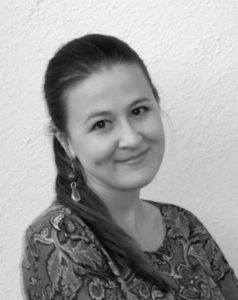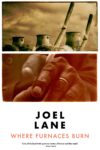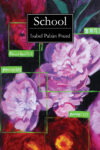 When Mystical Creatures Attack! is one of those books that turns readers into advocates. Everyone who reads the novel-in-stories makes it their mission to get it into the hands of as many people as possible. In my small academic community in the Upper Peninsula, Michigan, for example, the book went from unknown to required reading in a matter of weeks as every reader quickly spawned two more. Such devotion speaks to how deeply readers connect with the humor and heartfelt emotion that drive Kathleen Founds’ writing.
When Mystical Creatures Attack! is one of those books that turns readers into advocates. Everyone who reads the novel-in-stories makes it their mission to get it into the hands of as many people as possible. In my small academic community in the Upper Peninsula, Michigan, for example, the book went from unknown to required reading in a matter of weeks as every reader quickly spawned two more. Such devotion speaks to how deeply readers connect with the humor and heartfelt emotion that drive Kathleen Founds’ writing.
Winner of the Iowa Short Fiction Award and a New York Times notable book of 2014, When Mystical Creatures Attack! is the story of Ms. Freedman, an idealistic high school English teacher in McAllen, Texas who suffers a nervous breakdown. She lands in Bridges Psychiatric Wellness Solutions, an insane asylum where “guests earn Wellness PointsTM by participating in activities that activate emotional optimization,” which they use to “pay off their Emotional DebtTM and rebuild their Psychiatric Credit ScoreTM.” In Bridges, Ms. Freedman corresponds with her former students, including Janice Gibbs, a malcontent nursing home attendant, and Cody Splunk, a budding sci-fi writer who can’t take a hint. Told in short stories that take the form of letters, pamphlets, blog posts, journal entries, emails, responses to a high school writing prompt, and even recipes for cooking, the novel confronts issues of clinical depression, suicide, and the struggle to fight for a better world.
Kathleen Founds is a graduate of Stanford and the MFA program at Syracuse. Currently she teaches social justice themed class at Cabrillo College in Marina, California. We spoke over the phone during that brief, miraculous window when her toddler was napping.
Matt Weinkam: When I read your book I had initially assumed that it had been crafted in sections with the whole story in mind from the beginning, but from what I understand parts of the book were written as individual stories before you had a concept for the whole overarching narrative. Could you talk about the process of stepping into the book backwards?
Kathleen Founds: The idea of writing an entire novel is daunting because even if you have a terrific idea and you sit down and type twenty-five amazing pages, you still have two hundred to go. It’s easy to run out of steam. I’d tried to write novels a few times before, but I struggled with the obligation to maintain a consistent voice and tone throughout. I couldn’t access a lively, humorous voice on a morning I woke up depressed. It would get boring to write in the same voice. Once it feels like a chore . . . it’s over.
So when I was in my third year at Syracuse I was putting together a collection of stories as my thesis. I thought it would be funny if I made up fake blurbs for the collection, like, “Do you crave stories about thoughtful young women having problems with their lives? How about twenty in a row!?” I saw it as a weakness that I always wrote from a young female perspective, and that I always circled back to the same themes. So I was sitting there with my binder of stories in a coffee shop, waiting to meet with George Saunders. I got there early, and just kind of as a thought experiment to pass the time, I was like: What would happen if I tried to connect these stories? Well, I have this story about a teacher having a mental breakdown. Then I have five stories about Janice Gibbs, a teenager working in a nursing home. I could make Janice Gibbs one of the students in the teacher’s class! I have a story called “The Wormhole,” about a kid named Cody Splunk submitting stories to his high school literary magazine. I could make Cody Splunk one of the students in the class and the mean but intelligent girl he is corresponding with could be Janice Gibbs! I just started seeing what I could connect. I think the only reason this worked was that all of the characters came from parts of myself. So every time I sat down to write a short story, because the subject came from my preoccupations as a person, there ended up being some kind of thematic consistency.
And once you were able to discover that superstructure, all the pieces just fit into the larger story?
Yeah, so by the time George Saunders showed up at the coffee shop I had this kind of manic gleam in my eyes and I was like: I’m going to mash ALL my stories into a NOVEL! He was supportive, but he also said, hey, don’t strain to work in every story. Once I graduated from the MFA program I began weaving more connections between characters. I wrote stories where Janice and Ms. Freedman are corresponding with each other. I tried to come up with situations where Cody Splunk and Janice Gibbs could be in contact. Knowing that Ms. Freedman had a mental breakdown, I started writing some stuff that was set in the mental institution. And then I had the idea that I could take previous pieces that I had already written and come up with therapeutic journaling prompts that would incite such responses. Most of those journaling prompts were me going through my hard drive and thinking, what shards of stories or chunks of abandoned novels could conceivably be a response to a journaling prompt in an insane asylum?
That journal prompt frame really helps. As I was reading those journal stories I felt like there were two levels: what was happening in the story, but also what was happening with the person writing that story. It made that character seem even more three-dimensional.
I’m glad it worked! As I was doing it I just thought, can I get away with this? Scavenging the carcasses of abandoned writing projects for usable material?
Almost all of the stories in the book are in specific forms: journal entries, emails, recipes. Are those constraints helpful to you while you are writing or do they make it more of a challenge that you had to overcome?
The nice thing about writing a story in a structure like “Recipes for Disaster,” (a story in the form of a Methodist Women’s fundraising cookbook) is that you can refer to all kinds of stuff that happens off stage or happened in the past without actually having to go through the work of rendering it in scene. You skip the boring parts of writing.
One of the central concerns of the book is the relationship between students and teachers. We spend the majority of the book following Ms. Freedman and two of her students, Janice and Cody, as they grow and develop. That’s not a relationship that gets written about very often. What do you think drew you to that kind of story?
I’ve spent the majority of my life in educational settings where student-teacher relationships are very powerful. Throughout high school I had some really inspiring teachers. Maybe part of it was going to an all-girls Catholic school that had a very academic focus. So rather than being focused on relationships with boys, I was thinking a lot about literature’s existential meaning and going to my teacher’s office hours to have conversations about Dostoyevsky. I kept in touch with a few of my high school teachers, writing them letters, telling them about my life. And in those letters there would be that desire to make it sound like I was successful and had figured stuff out. So that tension when you’re writing to someone you admire and whose respect you want, telling the story but trying to present an image that is perhaps more together than your lived reality.
Then at Stanford during my senior year I had the extraordinary privilege of taking a writing class with Tobias Wolff. He would come in and sit down and open a Coca-Cola and allow us to carry the conversation for the first fifty minutes. We’d talk about the strengths and weaknesses of a story and then at the end Tobias Wolff would come in and render his verdict. But we would always secretly try to predict and pre-articulate whatever verdict Tobias Wolff was about to render. If Tobias Wolff affirmed our aesthetic judgment, we came away feeling smug.
During that class I turned in a story that veered away from my habitual tone. I usually tried to be quirky and funny and sort of absurd in an almost knee jerk way where everything had to be weird. Like a sofa in a house couldn’t just be a sofa, it had to be a bright orange sofa with purple flowers, and the book someone was reading couldn’t just be a regular book it had to be a self-help book with a bizarre title. So I’d written this story called “The Holy Innocent,” about a girl working in a rest home and processing the loss of a pregnancy and having this conversation about death with an elderly resident. That was a very different voice for me, kind of darker, and I was nervous about turning it in. Tobias Wolff’s printer was broken that week, so he hand-wrote a note in response. The first line in it was: “Katie, you’re a writer.” Which, as someone who wanted so badly to be a writer but always asked, “do I have the special talent or magic?,” getting that affirmation was very powerful. It encouraged me to keep writing even when the mediocrity of my sentences threatened to consume me with despair. When the voice of doubt reared up in my head, I could counter it with: hey listen, Tobias Wolff said I’m a writer.
But what was also meaningful is that when I was in the Jesuit Volunteer Corps, I would send Tobias Wolff an occasional postcard. And he would write back to me. It was incredibly generous. The fact that he took the time to stay in touch with me was a powerful affirmation.
So those relationships with teachers and mentors have been very meaningful, even crucial, in helping me find my way in life. It just seemed like a natural thing to write about and also a natural voice to try to inhabit — both the teacher talking to the student and also the student talking to the teacher.
Both Janice and Ms. Freedman deal with serious depression and both characters contemplate suicide. That’s a difficult subject to take on for a writer. How did you approach writing from that perspective?
Well, it’s not like I made an intellectual decision that it was a topic I was going to explore. It’s just something I’ve wrestled with. They say that in writing you have to go to the place of your deepest struggle and let that become a source of creativity and something that you work through. For example, when I was at Syracuse Amy Hempel taught there as a visiting writer . . .
Amy Hempel was also your teacher too?!
I know! It’s totally ridiculous how many wonderful writing teachers I had. So Amy Hempel had this very celestial, calm presence. And she had this beautiful long white hair that was very striking. In class she talked about how when she was in graduate school her writing workshop had been given the prompt “write a story about your worst secret.” And that was the writing prompt that triggered her to write the amazing short story “In the Cemetery Where Al Jolson Is Buried.” So when I was given that prompt, the topic I was drawn to write about was my experience of severe depression and the legacy of having a suicide in my family tree. There was always the reality in my mind that depression is not just something someone struggles with, but something that totally overcomes people and something that they succumb to. And as we have seen in the cases of David Foster Wallace, and more recently Robin Williams, it’s something that people can succumb to even if they have spectacular accomplishments and gifts and great personal strengths. So if I was going to write about what I feared most . . . I was going to have to confront depression and suicide.
That leads to my next question. Both Janice and Ms. Freedman, at different points in the book, must confront the possibility that maybe they can’t help but feel depressed, that they have no choice in the matter. Like you said, it “overcomes” people or they “succumb to it.” In the end, Ms. Freedman thinks that her mother didn’t have a choice when she committed suicide and so Ms. Freedman starts to believe she doesn’t have a choice either. But the turning point in Janice’s story is the opposite; she realizes she does have a choice. So I guess want to ask a question about which of those positions you think is true, but . . .
So let me get this straight. You’re asking me if free will exists?
Well . . . Yes?
(Laughter.) Well, I’ve thought about this question a lot. I think that we do have free will, but I think that some people, by virtue of their biochemistry and upbringing, are granted less free will than others. So the margin of how much free will a person has can vary. Maybe all the free will someone has is to resist succumbing to suicide through fifteen years of crushing depression, rather than succumbing after, say, five years. And I think some people who are blessed with a wonderful upbringing and naturally positive temperament have a much wider range of free will. I think the amount of free will that people have varies.
That is a great answer to an impossible question.
Thanks! . . . Yeah, the funny thing with Janice is that when she comes to her realization, her thought process is based on the misinterpretation of a Bible verse. Her thought process is actually kind of facile. It’s a decision made in reaction to and in rejection of the therapeutic halfway house community she’s in. Janice goes on to say that she doesn’t blame the world for the position she is in and she holds the women who are in the halfway house responsible for their own suffering. But, ultimately . . . that is not a compassionate perspective. So I thought it was an interesting idea to explore, that the decision that saves someone could, first of all, be based on a misinterpretation of a sacred text, and then, second, could be a less complex worldview . . . but that a flawed thought process might still end up saving someone.
One final connection I saw in the book has to do with fiction itself and what role it plays in our lives. In the title story of Mystical Creatures, one of the students writes about how Ms. Freedman says books can transport us to a magic place, but the problem, this student writes, is you get back and the real world isn’t magic. It’s kind of terrible, actually. In a later story, Ms. Freedman starts an advice blog where she answers anonymous questions. One woman writes to her saying she read a passage from Dostoyevsky that moved her to tears but she later decides it is a bunch of shit and maybe doesn’t mean anything. Both of these moments in Mystical Creatures are about the limitations of books in our lives. What do you think fiction’s responsibility is towards the real world?
That question reminds me of a conversation I had with my little sister Jenny — well, Jenny’s not that little. She’s 27. She had a book club in the co-op house she lived in and of course she made them read my book. When I came to the book club and fielded questions, Jenny brought up the fact that when she was in high school, she would read a book with the question: what is the world like? Because when she was young she didn’t have her worldview fully formed and she had these major questions: Is the universe hostile or benevolent? Does God exist? Is it possible to do good in the world? When you read with those existential questions open, every book is a potential revelation. So Jenny asked me, “What is the worldview of your book? If a kid reads your book looking for an answer about whether the universe is merciful and if it is possible to do good in the world, what does your book say?” Which is a pretty heavy question! So I threw it back at my sister like, well . . . what do you think, Jenny? Classic teacher move. My sister said that she got from it a worldview that acknowledges suffering but that is ultimately redemptive. And . . . I’m satisfied with that interpretation.
Matt Weinkam’s work has appeared or is forthcoming in Midwestern Gothic, TINGE Magazine, Monkeybicycle, The Rumpus, and DIAGRAM. He is currently in the MFA program at Northern Michigan University where he is co-managing editor at Passages North and a founding editor of Threadcount, an online journal of hybrid prose.
This post may contain affiliate links.







